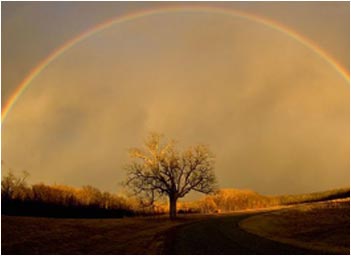HAVE You ever found yourself walking through the house singing, Hosanna. Hosanna. Hosanna in the highest? If you are like me, you may have even found yourself randomly saying “hosanna!,” though not really sure what you are saying or from where you heard it.
Whether you have listened or sang along, read it, or spoken it, this is a very powerful exclamation. Have you ever thought about what the name of Jesus as “Hosanna” actually means?
If you have never heard the term “hosanna” before, no worries. You are in the right place. As we dive into the meaning and where it can be found in the Word, we can be more intentional about using it. I believe this intention will lead our prayer and worship time into a deeper connection.
1. Hosanna means, ‘Save, please!’
“Please Lord, please save us. Please, Lord, please give us success” (Psalm 118:25).
The Hebrew word, “hoshi’a na,” is translated in Greek as “(h)osanna.” In English, we known it as “hosanna.” The original intent of the scripture is “Save!” It is viewed as a plea for help. It’s as if we were yelling “stop!” at someone about to throw a firecracker at us. We use this when we understand the potential impact of something about to happen, and as an act of surrender.
In moments like this, we realize we cannot save ourselves and we need to connect to our source of security quickly. In the firecracker example, that security is the person with the firecracker in their hand. In our spiritual lives though, that security is in God. In its purest form, this is worship as we feel we have to come to the end of ourselves and we need God to intervene.
2. Hosanna Means “Salvation! Thank You!”
Throughout different translations and edits, the original plea to “please, save us!” changed to a proclamation of “Salvation! Thank you!” We read above in Psalms 118:25, “Please, Lord, please save us. Please give us success.” This is the only time this plea is used. Right after that, in verse 26, there is a shift from concern to confidence.
Verse 26 says, “Blessed is the one who comes in the name of the Lord.” This is a great example of faith and a demonstration of the shift from Old Testament to New Testament. Today, we hear songs like the ones described in the opening and read scriptures in the New Testament where “hosanna” is used more as a term of adoration and praise.
3. Hosanna was used on Palm Sunday
The first time “hosanna” is used in the New Testament is in Matthew 21:9, for Jesus’ triumphant entrance to Jerusalem as King. Verse 9 says, “Jesus was in the center of the procession, and the people all around him were shouting, ‘Praise God (hosanna) for the Son of David!’ Blessings on the one who comes in the name of the Lord! Praise God (hosanna) in highest heaven!” (emphasis added)
Many people view this as a proclamation of a new salvation. Palm branches were placed in Jesus’ path and marked the beginning of what we celebrate as Palm Sunday. This occurred before Jesus was arrested on Holy Thursday and His crucifixion on Good Friday.
4. “Hosanna” is Found in the New Testament
If you read the New Living Translation as quoted above, you will miss the references to “hosanna.” The NLT translates “hosanna” to “Praise God.” To see these, you will need to use other translations like the KJV, or the ESV. You will find hosanna in these scriptures in the New Testament:
Matthew 21:9: “The crowds that went before Him and that followed Him were shouting ‘Hosanna to the Son of David! Blessed is He who comes in the name of the Lord! Hosanna in the highest!”
Matthew 21:15: “But when the chief priests and the scribes saw the wonderful things that he did, and the children crying out in the temple, ‘Hosanna to the Son of David!’ they were indignant.”
Mark 11:10: “Blessed is the coming kingdom of our father David! Hosanna in the highest!”
John 12:13: “So they took branches of palm trees and went out to meet him, crying out, ‘Hosanna! Blessed is He who comes in the name of the Lord, even the King of Israel!’”
5. The use of Hosanna changed and ushered in a new era
If we think back to the shift from Psalms 118, verse 25 to verse 26, it is interesting to note how the use of hosanna changed. There was one documented plea, and then the focus shifted to the faith of a salvation that was to come. Psalms 118:26 started a new era, saying, “Blessed is the one who comes in the name of the Lord.”
Jesus continued this in John 5:24, which states, “Very truly I tell you, whoever hears my word and believes him who sent me has eternal life.” Hosanna exemplifies man’s transition from pleading with God for action, to thanking Him for the action taken. It shows the true impact of Jesus’ act at Calvary.
6. “Hosanna” Depicts Two Places of Spiritual Well-Being
As you can tell, there are two completely different uses for “hosanna.” One use is pleading for help, while the other is just showing gratitude for what was done. They perfectly represent two places of spiritual well-being we all find ourselves in. I want to emphasize that these are two separate places. One is not better than the other and one is not a level to reach the other. They are just two places that we often find ourselves. We are either crying out to God for help, or we are thanking God for what has been done for us. We are in a better position, as a result.
Using Hosanna in times of worship and prayer
“Hosanna in the highest” is used when we acknowledge Jesus for His ultimate sacrifice and what it means for us and mankind as a whole. This may not be something we often say out loud, but we can think it in our minds and feel it in our hearts in times of worship. In your quiet place of prayer, you may find comfort in just saying these forms of hosanna out loud.
The biggest takeaway from this is the understanding that even if we are in that place in life where we are pleading, we should acknowledge it as a form of worship, just like how we give praise and thanksgiving. This mindset shift will empower us to connect with God in worship and prayer more often.
No matter which side of the spectrum you are on, we can approach God through prayer or worship the same. When we are at that place of feeling like we are failing or like we can’t go on, we can plead with God, “Please, hear me! Please, talk to me. Please, show me something new.” This is the original use of “hosanna.”
On the other hand, when we are connected with God and feel like we are overflowing, we shout praises: “Thank you, God! You are so good! Thank you for my life! Thank you for making a way for me!” This is also proper use of hosanna.
This article first appeared here.





















